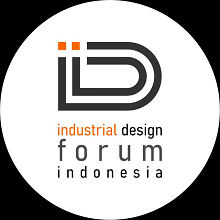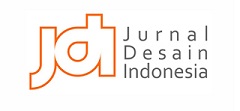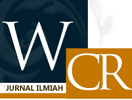KONSEP PANCA OPAT MASYARAKAT ADAT KASEPUHAN CIPTAGELAR DALAM PERSPEKTIF DESIGN THINKING
Abstract
This study aims to identify the concept of Panca as an invention rooted in the indigenous Kasepuhan Ciptagelar community's local wisdom as a way to improve their lives while upholding the honorable principles of their customs. Innovation is a practice of human intelligence by utilizing technology to solve life problems from time to time. This fact is in line with design science as a problem solver in order to improve human life for the problems they face. Problem-solving activities in design can be studied using a design thinking approach. The cultural practices of the Kasepuhan Ciptagelar indigenous community are a form of innovation based on local wisdom that teaches us about overcoming problems that occur in the internal environment in a way that they create themselves. One of them is known as the Panca Opat concept. For the community, Panca Opat is a concept that is the basis for the customary order of their lives. The area of this research is the science of fine arts and design. This study uses a design thinking approach. The cultural practices of the Kasepuhan Ciptagelar indigenous community are a form of innovation based on local wisdom that teaches us about overcoming problems that occur in the internal environment in a way that they create themselves. One of them is known as the Panca Opat concept. For the community, Panca Opat is a concept that is the basis for the customary order of their lives. The area of this research is the science of fine arts and design. This research uses a design thinking approach. The stages analyzed are three stages, namely the stage of identifying problems (Empathize stage), the stage of solving problems based on the user's perspective (Define stage) and the stage of answering problems including the use of technology (Ideate stage). At the Empathize stage, the nature is to identify problems so that the research model that will be carried out is qualitative research. Qualitative methods refer to Moleong (1993), described as research that intends to understand the phenomenon of what is experienced by research subjects such as behavior, perception, motivation, actions holistically, and by means of description in the form of words and language. The results of the study are the findings of parako as a representation of the concept of panca opat. Parako is a crucial and constructive finding in the visual culture of the archipelago.
Keywords
Full Text:
PDFReferences
Adimihardja, Kusnaka (1992). Kasepuhan Yang Tumbuh Di Atas Yang Luruh. Bandung : Penerbit Tarsito.
Aki Karma, (2015). Wawancara.
Chittick, William (2019) : The Antropocosmic Vision in Islamic.
Dillistone, F W. (2002). Daya Kekuatan Simbol The Power Of Symbols. Yogyakarta : Penerbit Kanisius.
Glen, R., Suciu, C., & Baughn, C. (2014). The Need for Design thinking in Business Schools. Academy of Management Learning & Education, 13(4), 653- 667. Diambil dari: https://www.jstor.org/stable/26621081
Hansen, S (2020). Investigasi Teknik Wawancara Dalam Penelitian Kualitatif Manajemen Konstruksi, Jurnal Teknik Sipil 27(3), 283-294.
DOI:https://doi.org/10.5614/jts.2020.27.3.10
Hidayat, A. (2018) Filsafat Berpikir Teknik Teknik Berpikir Logis Kontra Kesesatan Berpikir. Pamekasan: Duta Media Publishing.
Julianto, E.D & Hidayari, F (2018). Buku Metode Penelitian Praktis. Sidoarjo : Penerbit Zifatama Jawara.
Leavy, P (2017). Research Design - Quantitative, Qualitative, Mixed Methods, Arts-Based, and Community-Based Participatory Research Approaches. New York London : The Guilford Press.
Moleong, L J (1993). Metodologi penelitian kualitatif Edisi revisi. Bandung : Penerbit Remaja Rosdakarya.
Osann, I., Mayer, L., Wiele, I. (2020). The Design thinking Quick Start Guide: A 6-Step Process for Generating and Implementing Creative Solutions. United States: Wiley.
Rakhmat, M (2013). Pengantar Logika Dasar. Bandung : LoGoz Publishing.
Rosidi, A (2009): Manusia Sunda Sebuah Essai tentang Tokoh-Tokoh Satera dan Sejarah. Bandung : Penerbit Kiblat.
Seri Sundalana (2012) : Aspek Visual Budaya Sunda. Bandung : Penerbit Pusat Studi Sunda
Shanks, Michael (tanpa tahun). An Introduction to Design thinking Process Guide, PDF. Diambil dari: https://web.stanford.edu/~mshanks/MichaelShanks/files/509554.pdf diunduh pada 20 September 2022
Sumardjo, J. (2010).Estetika Paradoks. Bandung: Penerbit Sunan Ambu Press.
Thought. Diambil dari: http://www.williamcchittick.com/wp-content/uploads/2019/05/The- Anthropocosmic-Vision-in-Islamic-Thought.pdf diunduh pada tanggal 10 Maret 2019
Warnaen, S et. al, (1987). Pandangan Hidup Orang Sunda Seperti Tercermin Dalam Tradisi Lisan dan Sastra Sunda. Bandung : Departemen Pendidikan dan Kebudayaan-DIrektorat Jendral Kebudayaan-Bagian Proyek Penelitian dan Pengkajian Kebudayaan Sunda.
Zed, M (2004). Metode Penelitian Kepustakaan. Jakarta: Penerbit Yayasan Obor Indonesia.
DOI: http://dx.doi.org/10.22441/narada.2024/v11.i3.003
Refbacks
- There are currently no refbacks.
Fakultas Desain dan Seni Kreatif
Universitas Mercu Buana
Gedung E Lantai 4
Jl. Raya Meruya Selatan no.1, Kembangan, Jakarta 11650
Tlp./Fax: +62215871335
Journal International Standard Serial Number (ISSN) Registration:
The Journal is indexed by:
Tools for Citations & Plagiarism Detection:

Ciptaan disebarluaskan di bawah Lisensi Creative Commons Atribusi-NonKomersial 4.0 Internasional
 NARADA: Jurnal Desain dan Seni
NARADA: Jurnal Desain dan Seni

























